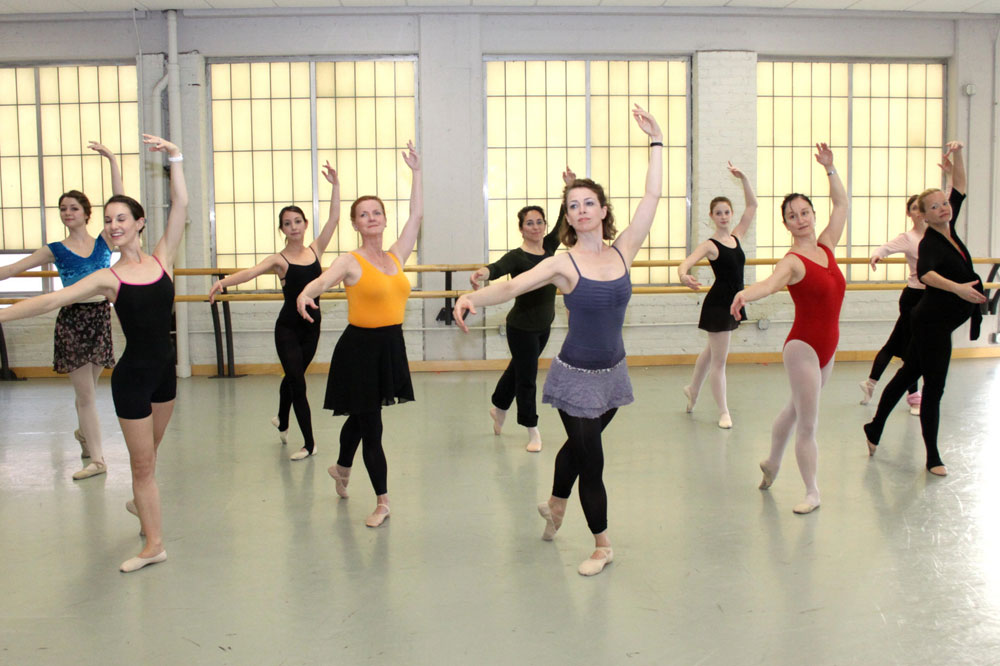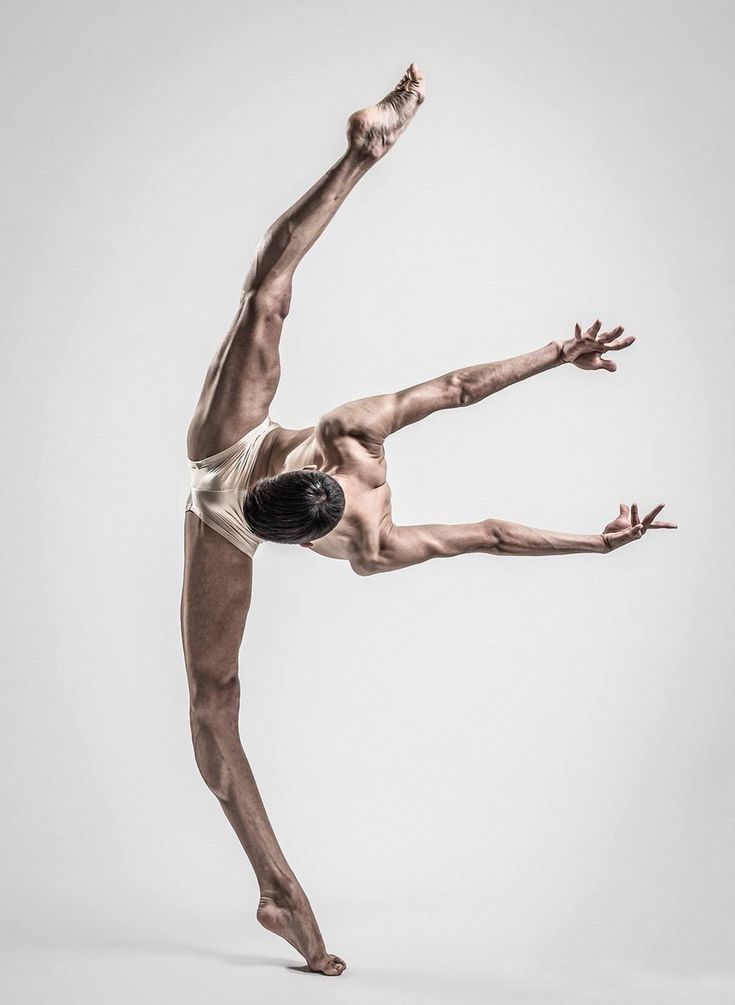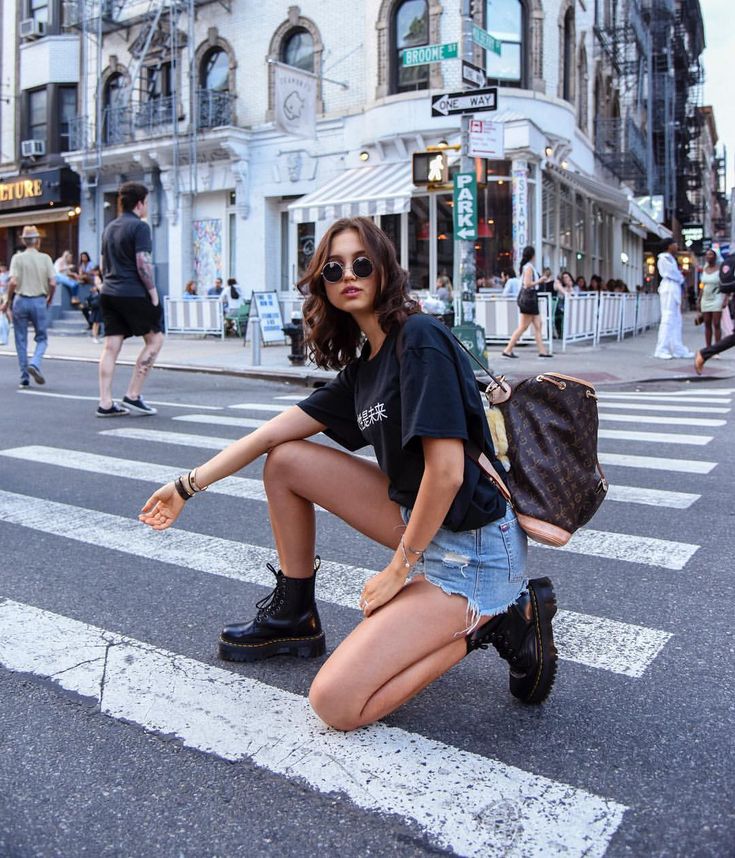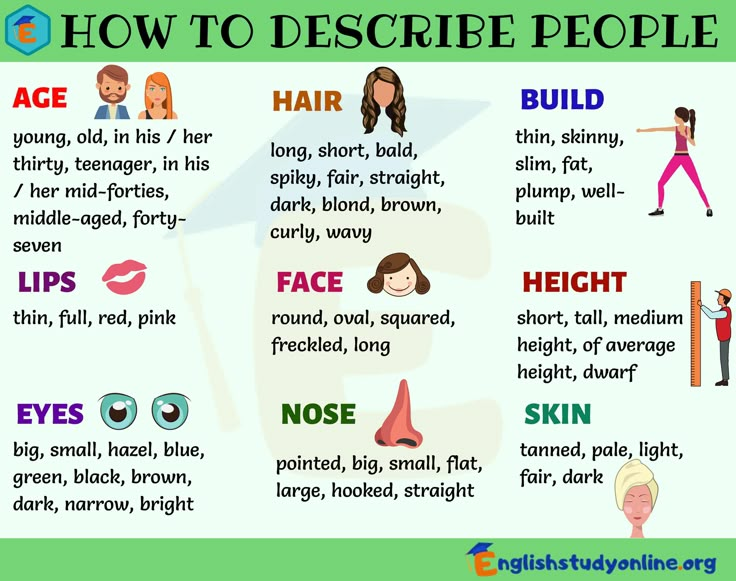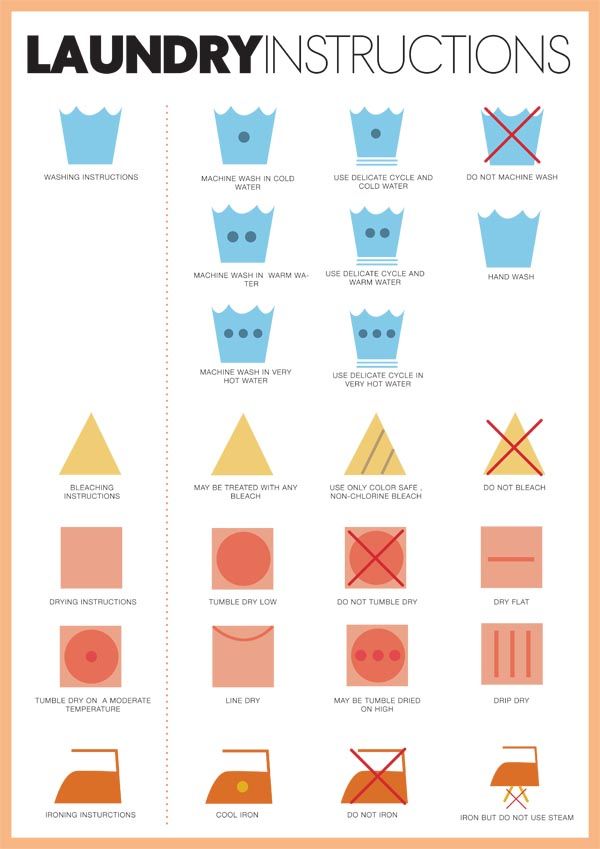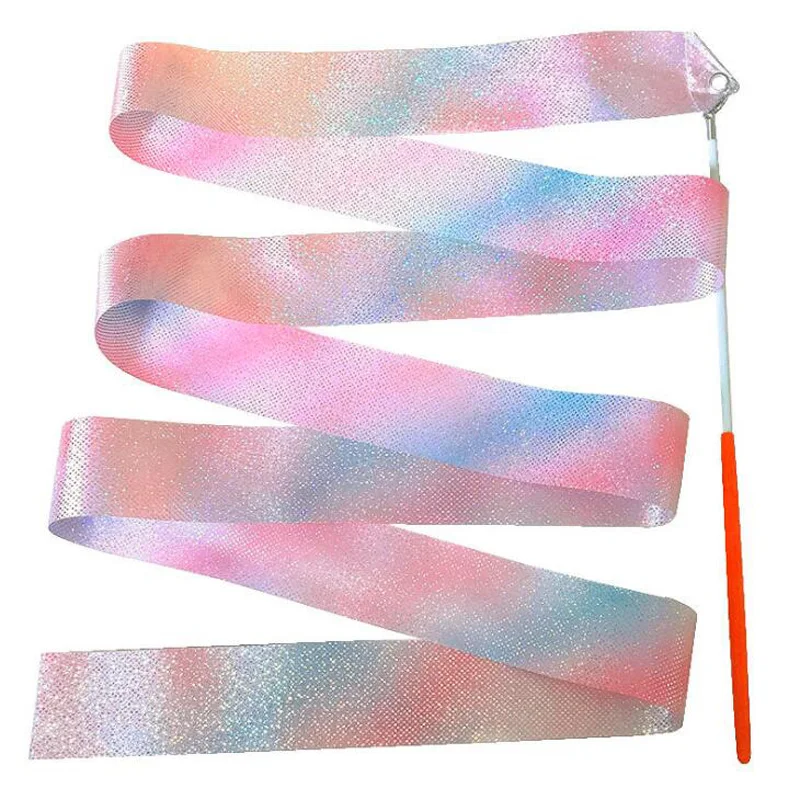How to dance ballet for beginners
5 Positions Children Can Practice at Home
The art of ballet is undeniably beautiful, graceful, and stunning. But that’s not to say it doesn’t come with its fair share of challenges. After all, there are many different thought processes, techniques, and variations associated with this dance form and it can takes years to master it. Not to mention, there’s no single “right” way to learn ballet for beginners.
With that said, many dancers will agree that it’s helpful to approach the barre with a basic understanding of its style and positions. No matter what genre your dance instructor teaches, the following fundamentals will always be a part of the curriculum. From Italy’s Cecchetti Method to the cross-genre techniques of contemporary American ballet, these beginner ballet positions keep dancers of every level in perfect form.
Ready to step up to the barre and learn some ballet? Our dance guide covers some of the most basic ballet moves every aspiring ballet dancer will need to know. From the five basic ballet positions to the port de bras, follow along to learn all the ins and outs of this elegant genre of dance.
Port de Bras Basics
For those just starting out, you might be hyper-focused on your footwork, perhaps forgetting about your arms. But the truth is, long before you learn complicated footwork or graduate to pointe shoes, you need to learn how to coordinate your arms and legs. In ballet (as in French), port de bras refers to the positions and movements of the arms. Ballet techniques focus on engaging the entire body, so for every position of the feet or legs, there’s a complementary port de bras that will allow your upper body to complete the full effect.
-
En avant (forward) – hold your arms out in front of your torso, rounding them slightly
-
En haut (high up) – now hold them above your head, keeping your shoulders flat
-
En bas (below) – bring them down to your sides, with your palms pointed inward toward your legs
Assume one position, then move one or both of your arms into the next.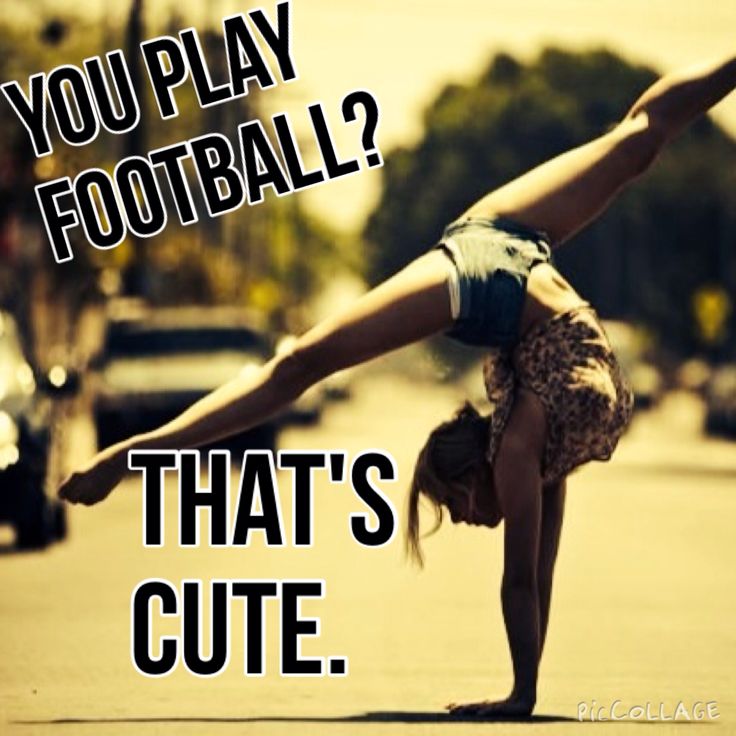 Did your shoulders move too? If you only moved one arm, did the other arm stay in the same place? Next, you’ll learn a transition technique that keeps your movements fluid and body parts in all the right places.
Did your shoulders move too? If you only moved one arm, did the other arm stay in the same place? Next, you’ll learn a transition technique that keeps your movements fluid and body parts in all the right places.
The Gateway
Now it’s time to work on the gateway position. As dancers move from one position to the next, their arms often stop in the gateway position along the way. This is fundamental in ballet for beginners, and it doesn’t hurt to practice at home first, because the goal is to train your arms until it comes naturally to you.
- Hold your arms in front of your body, rounding them as though you’re hugging a tree
- Lower your arms (but not your shoulders) very slightly; your elbows should no longer be even with your shoulders, but slightly below them
- Allow your hands to continue the curve of each arm, cupping them slightly with the palms facing you
- Line up your fingertips with the bottom of your breastbone (slightly higher than the bottom of your ribs)
- Keep your hands slightly apart; they must be free to move independently
The gateway position might look basic at first glance, but it’s incredibly important to achieve a slight downward slope with your arms, and to keep your shoulders turned out. At first, you’ll be tempted to move your shoulders closer together or pull them forward. Instead, keep them in the same position, no matter where your arms go.
At first, you’ll be tempted to move your shoulders closer together or pull them forward. Instead, keep them in the same position, no matter where your arms go.
The Five Positions
Almost all ballet for beginners starts with the five fundamental positions: first, second, third, fourth, and fifth. While children usually learn the foot placement of each position first, sometimes it’s helpful to look at the whole picture from the very beginning. Each position also includes the legs, arms, and hands. To begin, take a look at the image below, a great resource from the Ballet Dance Experts website.
Photo by http://www.balletdanceexperts.com/ballet-terms-with-pictures/First position – Form a “V” with your feet, placing the heels together and the toes apart. Ballet instructors will likely tell beginners making this ballet position to keep their heels touching, but more advanced dancers may maintain up to two inches between their heels. Now, turn each foot out as far as you can, then lower your arms until your fingers almost touch your thighs, forming parentheses around your torso.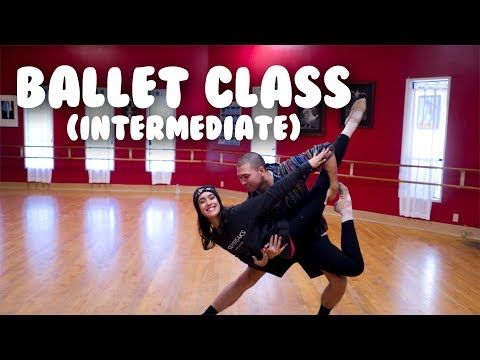 Unless you’re forming a plié while in this position, keep your legs straight.
Unless you’re forming a plié while in this position, keep your legs straight.
Second position – For this ballet pose, spread your feet slightly to the left and right, adding space between the heels, keeping your feet and legs facing outward. Your feet should be about hip-distance apart—if your feet are too close together, they may look like first position; if they’re too far apart the position won’t be useful. Hold your arms à la seconde by raising them at your sides until they almost form a “T”.
Third position – Many beginners will learn this basic ballet position. However, you likely won’t see it performed among more advanced dancers because it can be confused with a poorly executed fourth or fifth position. To do this pose, starting in first position, slide your right foot until its heel touches the inside of your left foot, roughly halfway between the heel and toe of that foot. Your feet and legs should be turned equally outward and your legs will remain straight.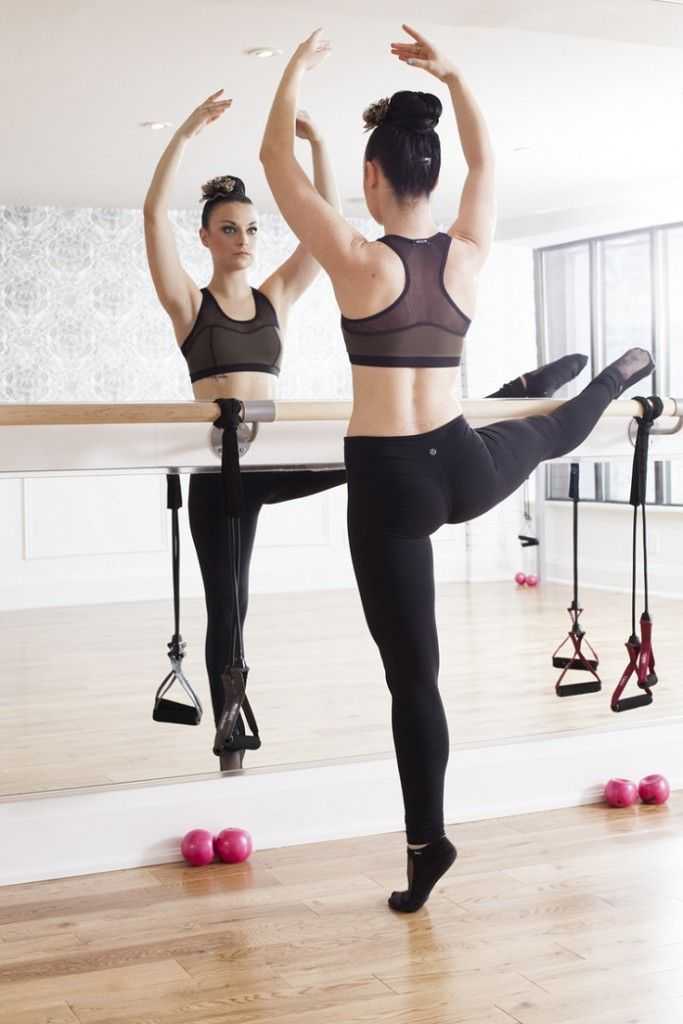 With your left arm in first position, lift your right arm slightly until your fingertips are even with your hips.
With your left arm in first position, lift your right arm slightly until your fingertips are even with your hips.
Fourth position – If you want to master pirouettes, it’s important to nail this basic ballet move. Take one step forward with your right foot, creating about a foot’s distance between both feet, but not too wide or too narrow. Align your heels with your opposing toes. As with the other positions, you’ll want to keep your legs straight with your knees and feet facing outward. Then lift your right arm the rest of the way, into second position.
Fifth position – This ballet position can get tricky and is often considered the most difficult in this set. From fourth position, turn out your right foot and place your left foot completely behind it, turning the opposite way, until your toes and heels touch. Remember to keep your legs straight and toes properly turned outward. Lift your arms en haut, leaving several inches between the hand above your head.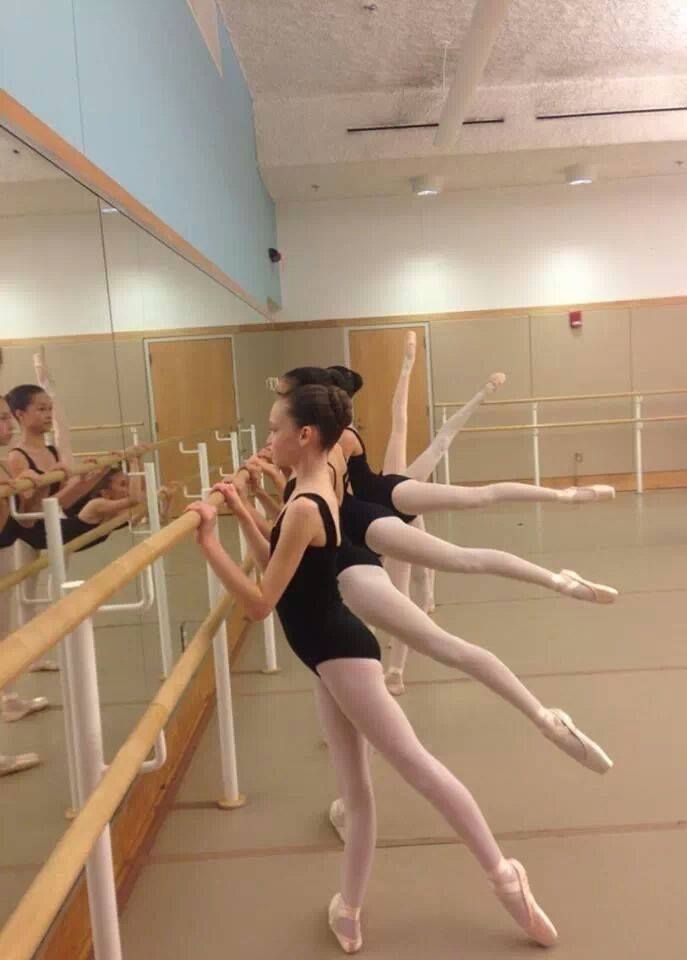 You’ll use this position to eventually transition into turns and jumps.
You’ll use this position to eventually transition into turns and jumps.
The corresponding arm positions will vary slightly, according to the ballet school you choose. For example, first position in Russian ballet calls for the gateway pose, and so does the Cecchetti version of fifth positionen avant. However, practicing these now will improve your coordination and train you to think of your body as one complete instrument, rather than separate parts. This fluid synchronicity is what makes ballet choreography so graceful and powerful.
Obviously, you won’t master these ballet basics overnight. Just like learning any kind of skill, you’ll need to dedicate plenty of time to practice these positions. But remember, don’t rush these ballet moves. Go slowly, and be deliberate and exact about your hand positions and foot placements—you don’t want to pick up any sloppy habits! The more you practice, the more second nature these moves will become. And as you get the hang of these foundational ballet poses, you can move on to more advanced and elaborate moves!
Perhaps you’ve always dreamed of performing in the “Nutcracker” ballet.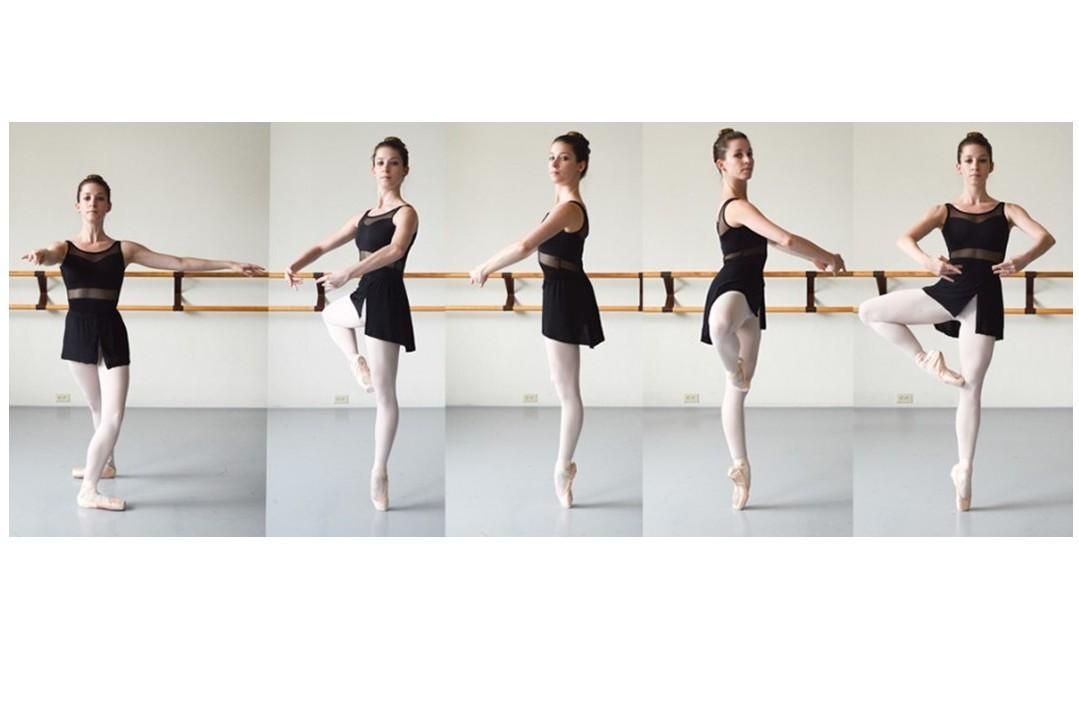 Or maybe you’re simply interested in taking on a new hobby. While our guide is a great starting place for learning some basic ballet positions, nothing beats working one-on-one with a private dance instructor. When you sign up for a spot in private dance lessons, your certified instructor will help you grow your skills and accomplish all your dance goals. Join today to see what a difference private lessons can make!
Or maybe you’re simply interested in taking on a new hobby. While our guide is a great starting place for learning some basic ballet positions, nothing beats working one-on-one with a private dance instructor. When you sign up for a spot in private dance lessons, your certified instructor will help you grow your skills and accomplish all your dance goals. Join today to see what a difference private lessons can make!
Photo by vharjadi
The 5 Best Online Ballet Classes of 2022
- Wellness
- Fitness
Our best overall pick is Dancio
By
Daley Quinn
Daley Quinn
Daley Quinn is a freelance beauty, lifestyle, and wellness writer and content strategist. She has penned stories for Allure, Fashionista, Well + Good, Women’s Health, The Cut, WWD, and more.
Byrdie's Editorial Guidelines
Updated on 12/11/22
Fact checked by
We independently research, test, review, and recommend the best products—learn more about our process.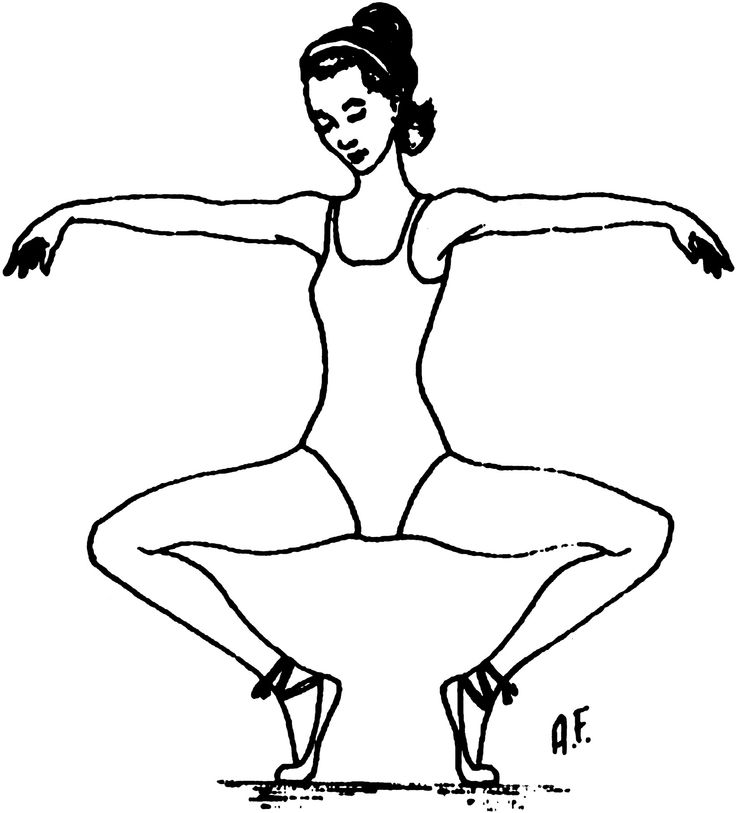 If you buy something through our links, we may earn a commission.
If you buy something through our links, we may earn a commission.
Byrdie / Design by Amelia Manley
Whether you are new to ballet or a seasoned dancer, online ballet classes are a great way to gain experience and have fun. We reviewed the five best online ballet classes for different skill levels so that you can get started right away. Plus, there are plenty of free or low-cost options to make ballet accessible.
Whether you’re looking for a new hobby or trying to get serious about dance, we rounded up the best online ballet classes.
The 5 Best Online Ballet Classes of 2022
- Best Overall: Dancio
- Best Budget: The Ballet Coach
- Best for Basics: MasterClass With Misty Copeland
- Best Professional: American Ballet Theatre
- Best for Cardio Ballet: The Ballet Spot
Best Overall: Dancio
Dancio
Sign Up Now
Why We Chose It: Best for those who love ballet, modern, and contemporary dance, Dancio is a great online platform for beginners to advanced dancers.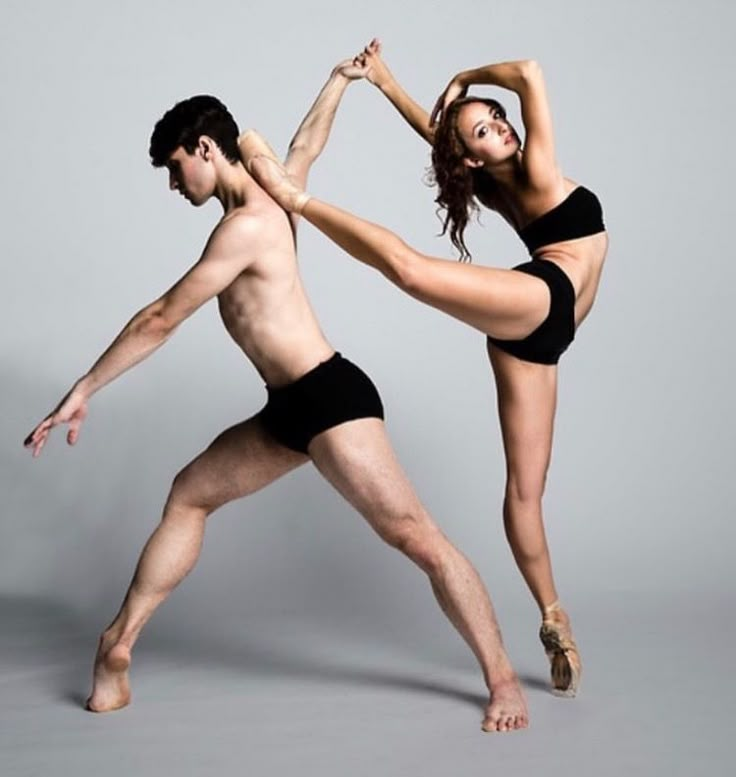 We chose it because of its extensive library of content, as well as its option for one-on-one instruction.
We chose it because of its extensive library of content, as well as its option for one-on-one instruction.
What We Like
- Mix of ballet, modern, and contemporary
- Option for one-on-one or group classes
- Instructors are elite dancers
What We Don’t Like
- Live sessions don’t come with a subscription
- A la carte classes only available for 48 hours
- One-on-one or group instruction can get pricey
Combining dance and video, Dancio was founded in 2017 by Caitlin Trainor, a choreographer and dancer. Dancio offers not only ballet, but other types including modern and contemporary dance, too. So if you love practicing ballet, but also are looking for other options, Dancio is the one for you.
Offering an online portal with more than 85 pre-recorded dance classes, you can learn from big-name dancers including Julie Kent, Wendy Whelan, Khalia Campbell, and Laura Halzack. The best part of Dancio, though, is its live classes—the program offers 30- or 60-minute private classes with various instructors. You can opt for a one-on-one lesson or a group course. Private sessions range from roughly $50 to $350.
You can opt for a one-on-one lesson or a group course. Private sessions range from roughly $50 to $350.
For unlimited streaming of all classes, Dancio charges a subscription fee of around $20 per month. Otherwise, it will cost about $5 to purchase a class a-la-carte, with 48-hour access for the rental.
Best Budget: The Ballet Coach
The Ballet Coach
Sign Up Now
Why We Chose It: The Ballet Coach offers a huge library of free, live classes on her YouTube channel that are accessible to all.
What We Like
- Free, live classes
- Available for all ages and levels
What We Don’t Like
- Classes only last 25 to 45 minutes
- Advanced levels won’t be challenged enough
With nearly 25,000 subscribers, Sarah Du-Feu offers free ballet classes on her YouTube channel, The Ballet Coach. From lessons for tiny tots and beginners to intermediate-level dancers, The Ballet Coach truly has something for everyone.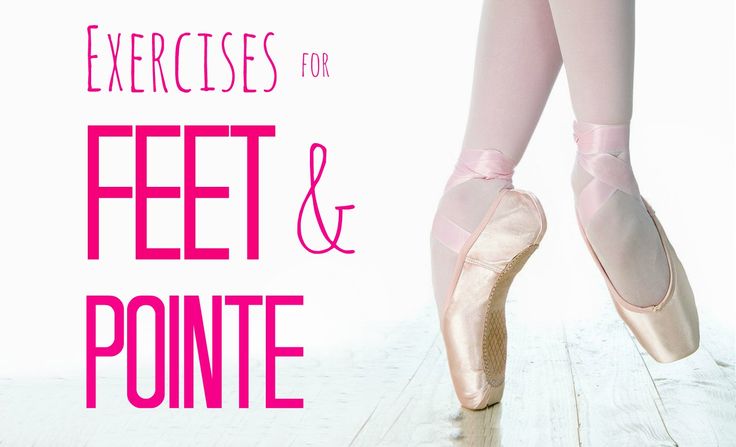
Most of her courses are taught live via YouTube, but are recorded and posted on her page to view for free, whenever you’d like. The classes are usually around 25 to 45 minutes long and range from how to perform basic steps and stretching to ballet barre fitness and sessions for intermediate/adult dancers.
This is a great option for those who want to dip their toes into the world of ballet without spending a dime on learning the steps and techniques. If you’d like to go further into your practice, The Ballet Coach offers a program on her website, where you'll pay around $20 per month (or roughly $200 per year) for access to three different adult live classes per week, as well as regular tutorial videos.
Best for Basics: MasterClass With Misty Copeland
MasterClass with Misty Copeland
Sign Up Now
Why We Chose It: For those who are looking to learn more about skill, technique, and form, Misty Copeland’s MasterClass is for you.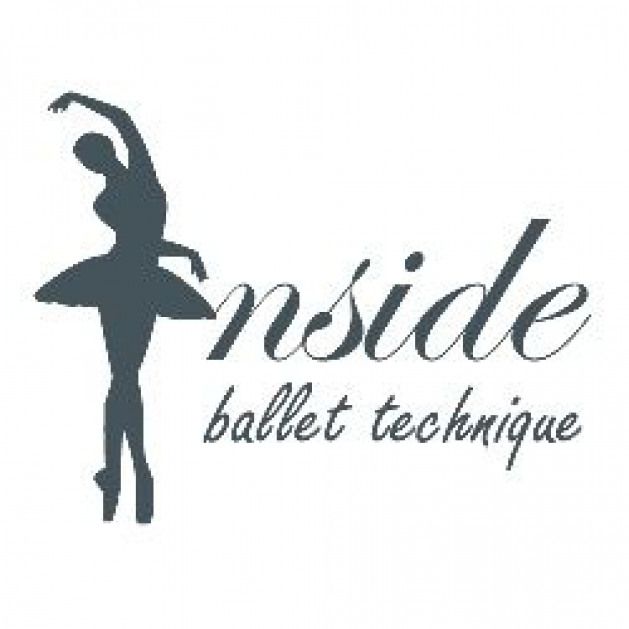 We also love that you can learn new moves from one of the world’s best ballerinas.
We also love that you can learn new moves from one of the world’s best ballerinas.
What We Like
- Learning technique and form from one of the best ballerinas in the world
- Access to more than 100 MasterClasses if you sign up with the All-Access membership
What We Don’t Like
- Focused more on form, technique, and skill rather than a full ballet workout
Misty Copeland’s MasterClass is a 17-part course that focuses on all things ballet, including owning your power, plies, tendus, and so much more. The total class length is an hour and 46 minutes, with each lesson challenging you to perfect your form and technique under the instruction of one of the greatest ballerinas in the world.
This MasterClass is a great option for ballet dancers who are either just starting out or are trying to move up into the intermediate territory. All lessons are pre-recorded, so you will not find any live, one-on-one instruction within this online dance platform.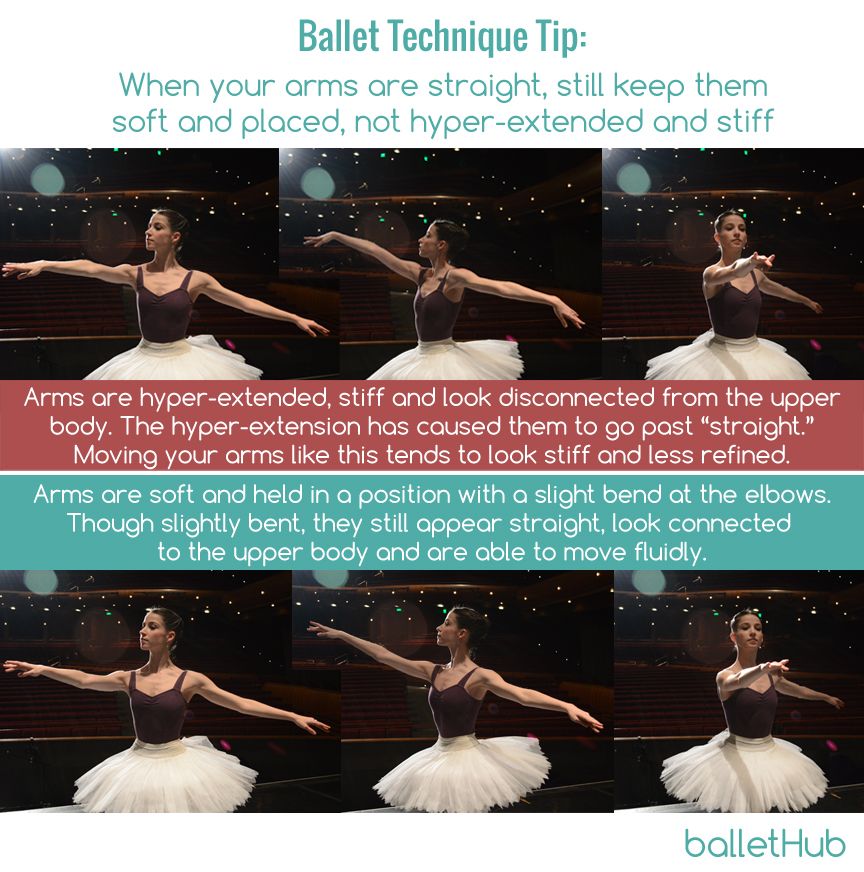 Additionally, the course is more of a way to learn the techniques and skills around ballet, rather than offering a true ballet-inspired workout, such as barre or cardio ballet.
Additionally, the course is more of a way to learn the techniques and skills around ballet, rather than offering a true ballet-inspired workout, such as barre or cardio ballet.
Misty Copeland’s course is part of the MasterClass series. A membership costs around $180, which lasts for a year and gives you unlimited access to all MasterClass series until you cancel.
Best Professional: American Ballet Theatre
American Ballet Theatre
Sign Up Now
Why We Chose It: Not only are you guaranteed quality instructors in every class, but we also love that you can pay per session, rather than a monthly or yearly fee.
What We Like
- Excellent instructors
- Per-class fee
What We Don’t Like
- No refunds, returns, or exchanges on registrations
- Individual class fees might get expensive
The highly-esteemed American Ballet Theatre (ABT) offers virtual online classes for adults (ages 16 and over).
While you don’t need to be a ballet-pro to take classes from ABT, the company does recommend newbies to the Beginner Ballet classes, so that they can get a basic understanding of ballet vocabulary. The theatre offers three levels of classes, with multiple live streams happening most days during the workweek.
The Beginner Ballet course is 90 minutes long, costs around $15 per class, and is ideal for those who are just getting started in ballet or are trying to relive their past ballerina days. The class focuses on alignment, the foundation of technique, and movement quality.
The Intermediate/Advanced Ballet, which is great for the dancer looking to improve existing skills at home is offered for $15 for 90 minutes. Designed for those with a solid amount of previous ballet training and knowledge of ballet vocab, this class focuses on coordination, movement quality, and technical strength.
Finally, the Body Conditioning for Dancers course is about 45 minutes long and is priced at roughly $10 per session.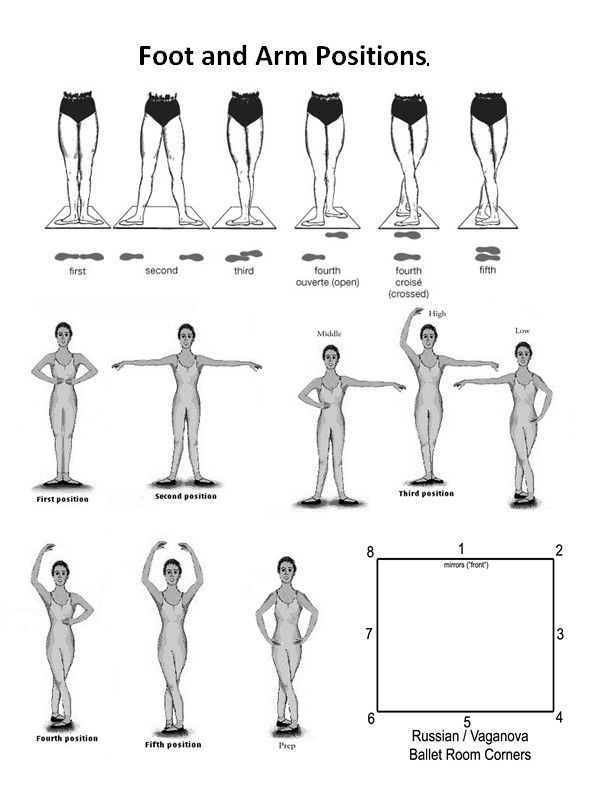 With this one, it’s all about bodyweight exercises to help you develop lean muscle mass while improving balance, flexibility, and endurance.
With this one, it’s all about bodyweight exercises to help you develop lean muscle mass while improving balance, flexibility, and endurance.
Registration opens 14 days before class and closes one hour prior to its start time. Once you’re all signed up, Zoom information will be emailed to registered participants 30 minutes before the class.
Best for Cardio Ballet: The Ballet Spot
The Ballet Spot
Sign Up Now
Why We Chose It: The Ballet Spot offers both on-demand and live classes, as well as virtual private ones, too. These courses are great for the dancer who really loves ballet and only wants to spend their money on this form of dance.
What We Like
- A variety of ballet classes available
- Open to all levels
What We Don’t Like
- On-demand, pay-per-class is only available for 24 hours
The Ballet Spot offers a wide variety of ballet classes taught by professional instructors, including cardio ballet, total body barre, ballet breathe and flow, ballet sculpt, Broadway ballet, and more.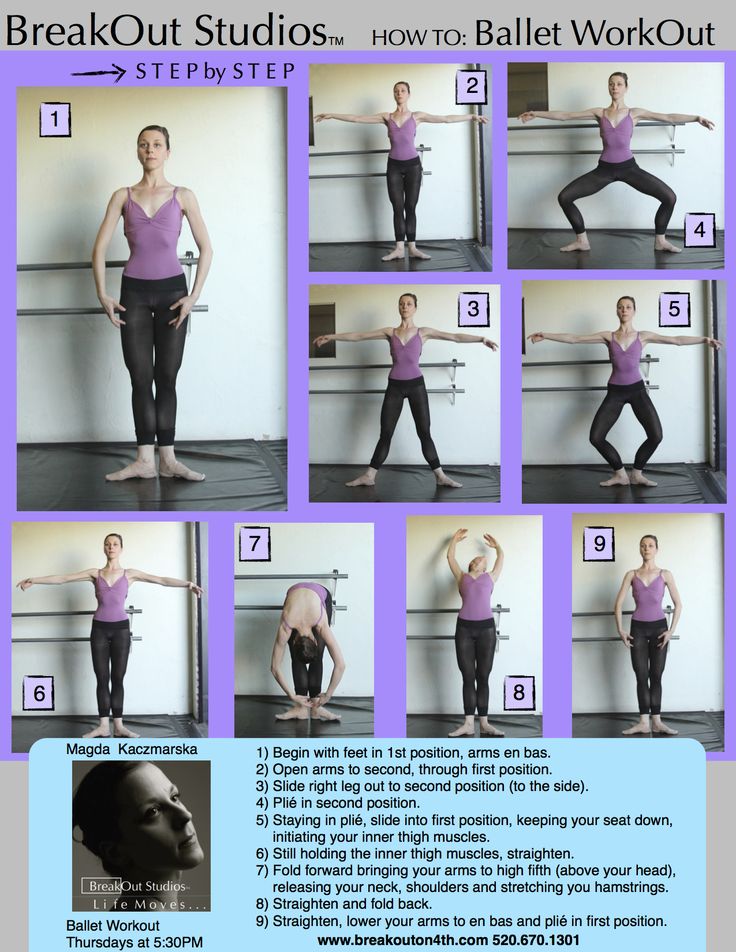
Lessons with The Ballet Spot are offered through a video-conferencing platform so that the instructor can teach and critique your form along with other members in the class.
Live lessons range from 30 minutes to an hour and cost around $14 per session. You can also purchase live stream class packages—five of them are roughly $60, while 10 cost about $110.
The Ballet Spot also features on-demand lessons, which are priced at around $5 each for a 24-hour rental, or you can purchase unlimited access to more than class recordings (one week unlimited) for about $25 per week.
Bottom Line
Picking the best online ballet class really depends on your needs and your skill level. For beginners, The Ballet Coach or Misty Copeland’s MasterClass might be your best bet, while intermediate to advanced dancers might find the American Ballet Theatre's adult courses ideal for learning from the pros. For those looking for more of a workout, The Ballet Spot might be the best option, considering it offers so many different types of cardio and barre ballet classes.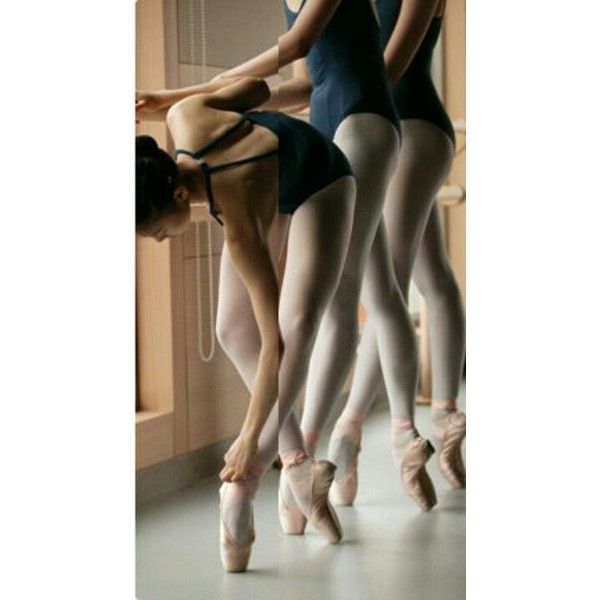 And finally, if you love ballet, but want a bit more variety, Dancio is a solid option.
And finally, if you love ballet, but want a bit more variety, Dancio is a solid option.
What Do the Best Online Ballet Classes Offer?
The best online ballet classes are available either through livestream, on-demand, or one-on-one instruction, and include anything from classic ballet routines and cardio ballet workouts to instruction on how to improve technique and form.
Who Should Take Online Ballet Classes?
Whether you’re completely new to ballet or are close to being the next Misty Copeland, anyone and everyone can take ballet classes online, regardless of age or skill level. If you’re looking to lengthen and strengthen your body, rather than focus on raising your heart rate high, ballet might be a good option for you.
How Much Do Online Ballet Classes Typically Cost?
The price of online ballet classes can vary. Some classes are offered free, while others might require a subscription fee to have on-demand access. Memberships range from approximately $15 to $100 per month, with discounts available for longer subscriptions.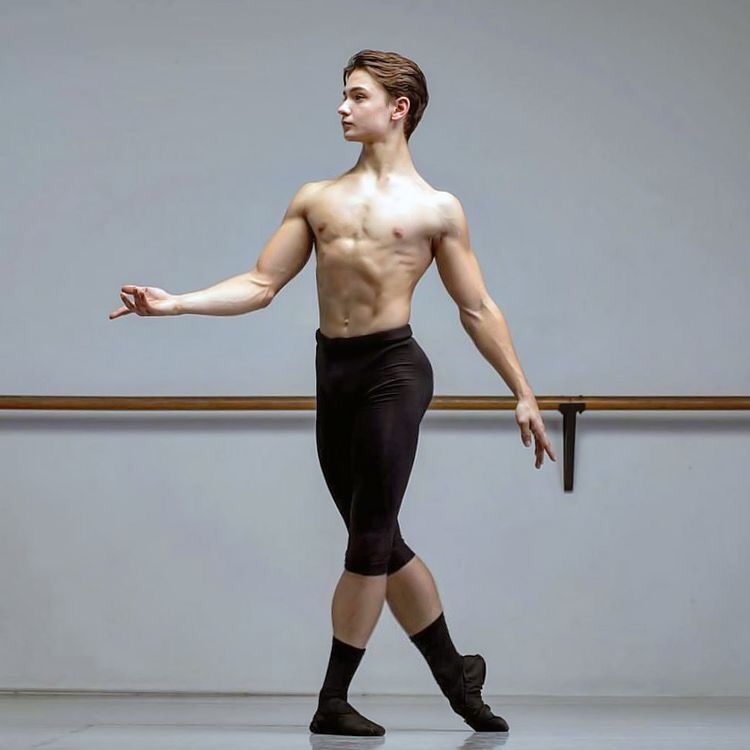 Most classes offer a free trial or let you download courses for a small fee before committing to a membership.
Most classes offer a free trial or let you download courses for a small fee before committing to a membership.
How We Chose the Best Online Ballet Classes
We chose the best online ballet classes based on budget, skill, and overall experience. Regardless of which platform you choose from our list, you will be taught by professional instructors who are experienced and can guide you in advancing your ballet skills. We included courses for those who want to try ballet for the first time or wish to become professional dancers.
Final Verdict
Dancio was chosen as the best overall online ballet class. It offers a wide variety of classes hosted by seasoned professionals. We also love the different ways to pay for classes, whether that is by choosing an individual class or signing up for a subscription.
The 7 Best Online Exercise Classes for Working Out Anywhere
How to learn ballet at home
I must say that ballet lessons are becoming more and more popular. Among the fans of the now fashionable Barre workout (training at the barre), there are many stars, including Madonna and Natalie Portman.
Among the fans of the now fashionable Barre workout (training at the barre), there are many stars, including Madonna and Natalie Portman.
And no wonder. Classical exercises at the barre, which are included in the daily training of ballerinas and ballet dancers, harmoniously develop all the muscles of the body, not allowing them to be pumped over, and also improve balance and flexibility. Other bonuses of such activities are perfect posture, beautiful gait and gestures. Moreover, you will receive them very quickly, in a couple of months.
If you don't have the opportunity to study with an instructor in a ballet class, hold ballet lessons at home! All you need for them is a chair.
“Choose it according to the height of the back,” advises Andrey Shiporov , an elite dance program trainer at the World Class fitness club chain. “Your palm should rest on it so that the elbow is at waist level and the forearm is parallel to the floor.” In this case, the palm should lie freely on the back, and the shoulders should be on the same line.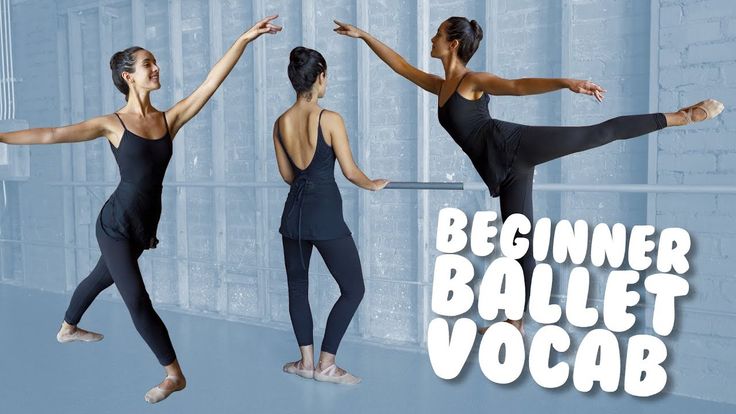 The machine can also imitate the back of an armchair or sofa, or a window sill of the required height.”
The machine can also imitate the back of an armchair or sofa, or a window sill of the required height.”
Before starting the complex, Andrey Shiporov advises to warm up a little: stretch all the joints, stretch, bend and twist.
Demi-plié
Stand next to a chair with your feet in first position, lean on the back of the chair with one hand, move your free hand to the side. Gently lower yourself into a squat, spreading your knees to the sides, until the position in which the hips and shins make a right angle. Also slowly rise to the starting position. Make sure your heels do not come off the floor. Repeat 1 more time .
Grand plie
Start the squat as before, but after pausing in the demi plie, go down even lower. Make sure your back is straight and your knees are out to the sides. Rise in the same way, through the demi-plié. Repeat 1 more time .
Relevé
Stand next to a chair with your feet in first position.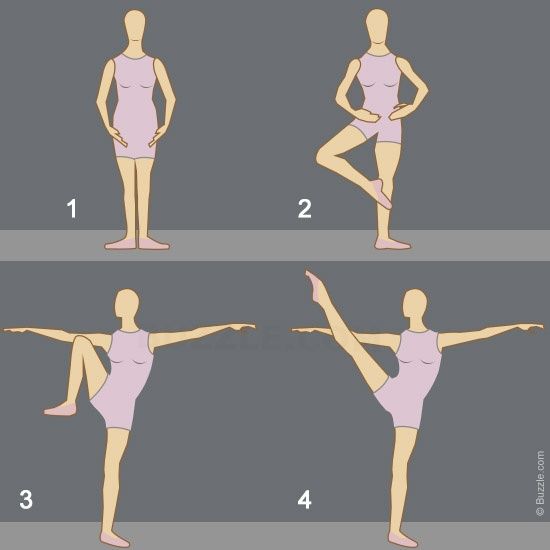 Gently rise on your toes, stretching your body up, and just as slowly lower yourself onto your heels. Repeat 4 times.
Gently rise on your toes, stretching your body up, and just as slowly lower yourself onto your heels. Repeat 4 times.
[new-page]
Tandu Batman
Stand in fifth position, straighten your back. Without lifting your toe off the floor, as if drawing a straight line, bring your right foot forward. Return to the starting position and repeat the leg movement, this time to the side. Stand again in fifth position, but put your working leg behind the supporting one and draw a line across the floor back. Through the starting position, again bring the leg to the side and return to the fifth position. Watch for the eversion of the foot: the toe is extended, the outer part of the foot is tilted to the floor, the inner part looks up, the heel does not touch the floor. Repeat movement 4 times and then do 4 repetitions with the other leg.
Zhete
In this exercise, as in the previous one, the working leg moves in three directions: forward, sideways, back and sideways again.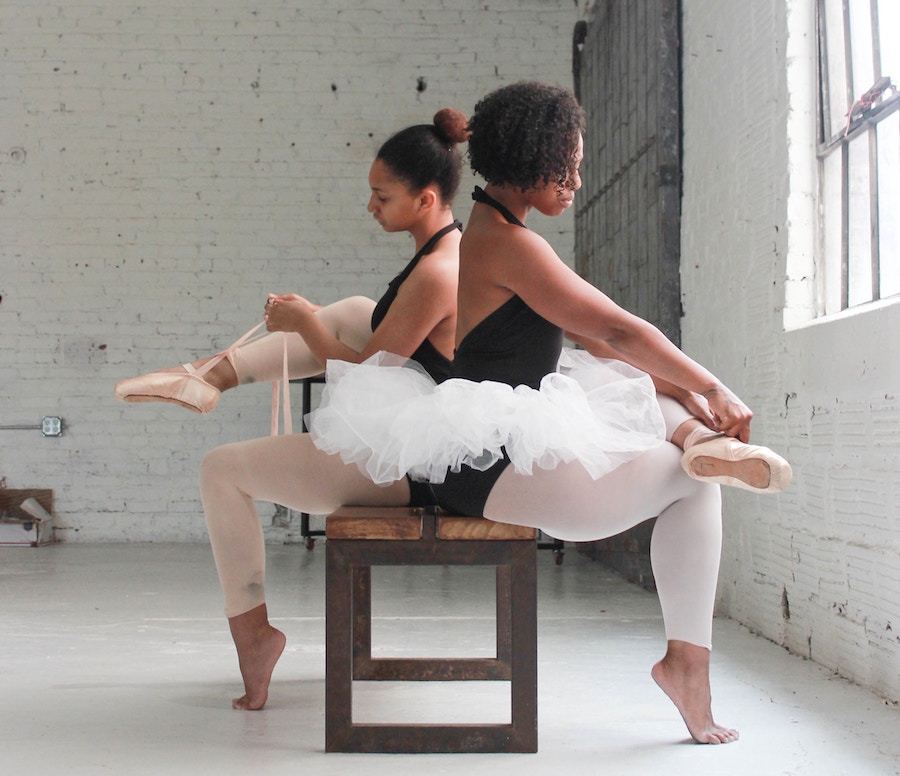 But the sock at the same time comes off the floor every time. The leg is raised to a position in which it will be about 45 degrees with the other. Having done the whole chain of movements, repeat with the other leg.
But the sock at the same time comes off the floor every time. The leg is raised to a position in which it will be about 45 degrees with the other. Having done the whole chain of movements, repeat with the other leg.
Rond
Step your right foot forward without lifting your toe off the floor. Smoothly, drawing a semicircle, move it to the side, and then back. Return to starting position, repeat 6 times from each leg.
Fondue
Lower yourself into a demi-plié, bending your supporting left leg and bringing your right toe to her ankle bone. Extending the supporting leg, stretch the right leg forward. Return to starting position. Repeat the movement, moving the right leg to the side, but after that, lower yourself into a demi-plié, bringing the right foot behind the left shin. Straighten the supporting leg, taking the right back. Move to the side again and return to the starting position. Do exercise 4 times from each leg.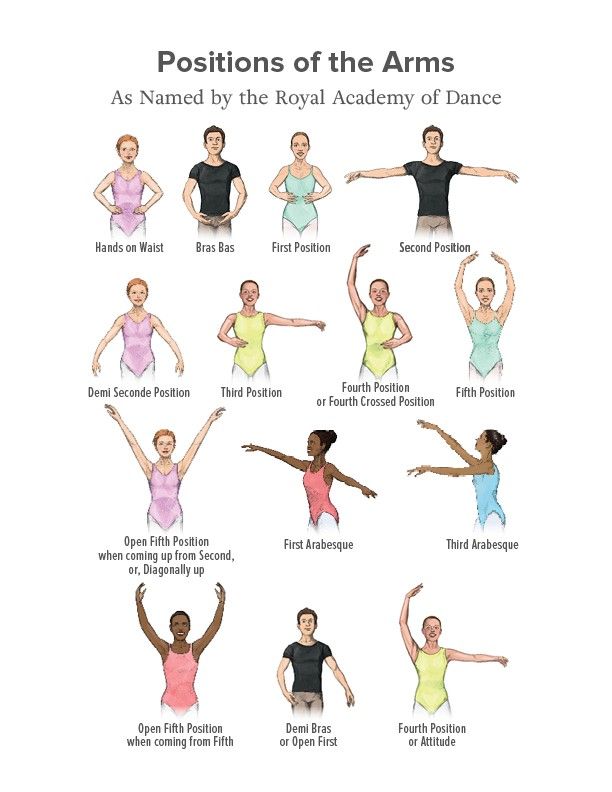
[new-page]
Half toe jump forward
Stand in fifth position: right foot in front of the left. Get down in demi-plié and, rising on the half-toes of the supporting left leg, bring the toe of the right leg to the bone of her ankle. Lower your right leg to the toes and return to the starting position. Repeat 6 times on each leg.
Half-toe jump with transition to kudepe back
Perform the same movement, but work with the foot behind the pivot. Repeat 4 times on each leg.
Adagio
Stand in fifth position. Bring your right leg forward, as in a batman tandyu, but then lift it, straight, to parallel with the floor. Return to the fifth position and, through the batman tandyu, raise your leg to the side parallel with the floor. Then do the same movement back, again to the side and return to the starting position. Repeat with the other leg.
Grand Batman
Stand in fifth position: right foot in front of left. Swing forward with your right foot, being careful not to tilt your body back. Do the same swing to the side, back, back to the side and repeat the movement with the other leg.
Swing forward with your right foot, being careful not to tilt your body back. Do the same swing to the side, back, back to the side and repeat the movement with the other leg.
Do each movement of this complex in one approach : at first it is much more important for you to master the correct technique, and not strive for a large number of repetitions. When you feel confident in the movements, you can do all the movements on the second circle, and then on the third.
Feel like a ballerina!
adult ballet, adult ballet classes
Ballet - prices and reviews. Comparative table of dance schools in Yekaterinburg, where there is a service of ballet classes for adults.
Service:
Location:
Show
changes
Show map
The Dance.Firmika.ru portal contains information about where you can sign up for ballet classes in Yekaterinburg: addresses and phone numbers of dance schools and dance studios, prices for the most popular directions, student reviews. For greater convenience in using the portal and searching for a dance school, we suggest using a convenient filter by districts and metro stations. Visual tables will help you compare the cost of classes and trainings in different dance studios in the city, choosing the best option for the price.
For greater convenience in using the portal and searching for a dance school, we suggest using a convenient filter by districts and metro stations. Visual tables will help you compare the cost of classes and trainings in different dance studios in the city, choosing the best option for the price.
Ballet lessons for adults in Yekaterinburg
Finding ballet classes in dance schools in Yekaterinburg is not so easy - not every dance studio is ready to offer classical choreography. However, we will help you to solve this problem! The portal contains detailed information about ballet classes for adults: phone numbers and addresses of institutions, student reviews, the cost of one-time training and subscription prices.
Classical choreography and ballet lessons for adults is the right way to the perfection of the body and soul. Classes will be an excellent basis for learning in the future, a variety of types of dances, they will help improve the figure, strengthen back, give the gait an attractive lightness.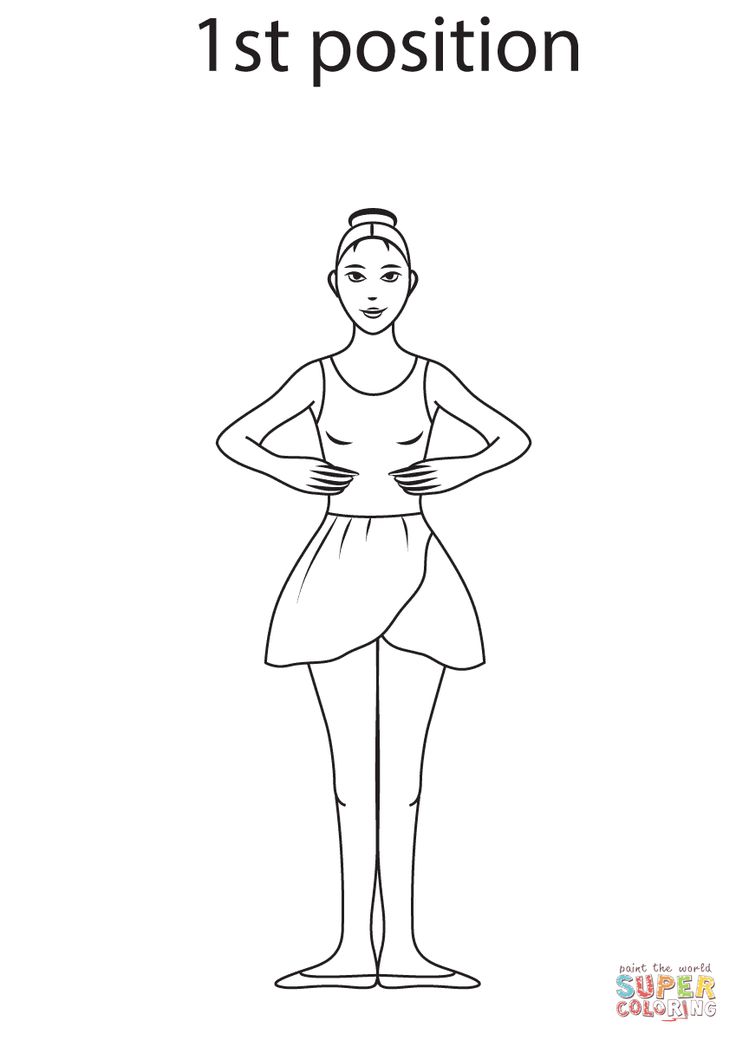 Combining stretching and movement ballet, you can get an excellent result: a flexible and beautiful body, good well-being and a feeling of unusual lightness, harmony with oneself and an increase self-esteem. All these ballet classes for adults will be presented without exhausting workouts.
Combining stretching and movement ballet, you can get an excellent result: a flexible and beautiful body, good well-being and a feeling of unusual lightness, harmony with oneself and an increase self-esteem. All these ballet classes for adults will be presented without exhausting workouts.
How to dance ballet? Features of ballet lessons for adults
Carefully selected exercises and a well-thought-out program allow achieve amazing results. The benefits are undeniable! These include exercises for the transverse and oblique muscles of the press, muscles of the spine and back, exercises to improve coordination of movements and strengthen the work of the vestibular device. Ballet courses for adults are suitable for those who wish, regardless of gender and age. During classes, you can completely immerse yourself in the atmosphere art and dance, which manifests itself in every tilt of the head and movement of the hands.
Classical choreography for adults is a ballet lesson for those who wish master basic dance skills, work out a state of sustainable the balance necessary for dancing (aplomb).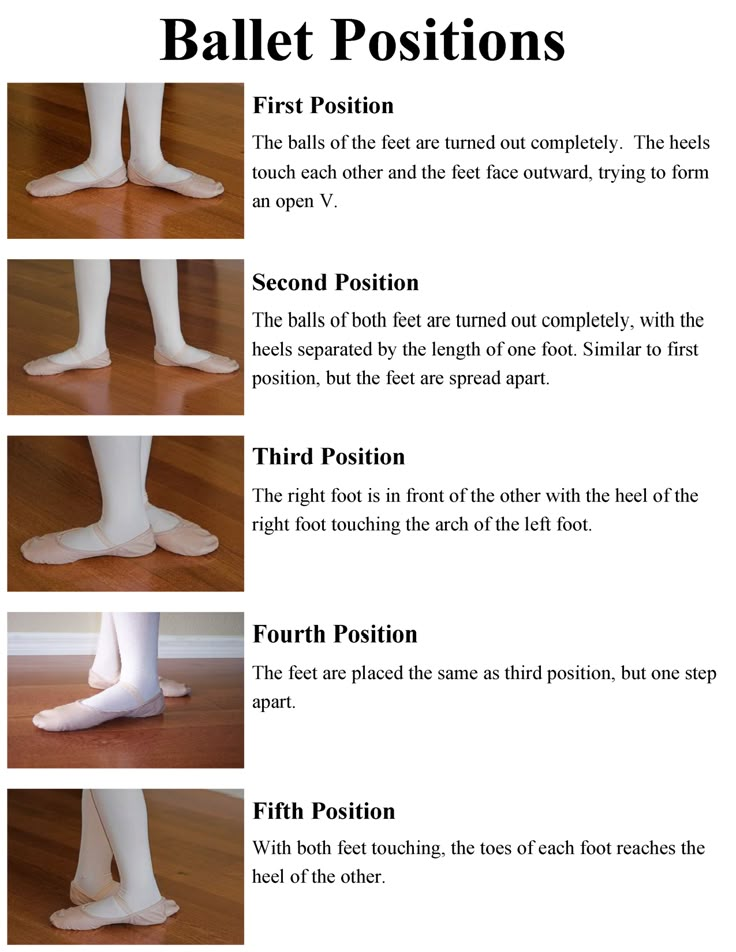 Ballet lessons for beginners include exercises at the barre and exercises in the middle of the hall. Every class begins with a warm-up and study of classical ballet positions, correct setting legs and arms, jumping, all kinds of rotations and dance combinations. Depending on the school, training may take place to the classical piano. music or to more modern analogues.
Ballet lessons for beginners include exercises at the barre and exercises in the middle of the hall. Every class begins with a warm-up and study of classical ballet positions, correct setting legs and arms, jumping, all kinds of rotations and dance combinations. Depending on the school, training may take place to the classical piano. music or to more modern analogues.
Despite the fact that ballet classes for beginners take place on lightweight program, in order to achieve some success, you will have to make a lot of perseverance and hard work. However, the romance and elegance of the ballet invariably attracts more and more dance fans who want not only to take care about your own figure and shape, but also to give the body an amazing lightness, which found only in ballerinas. Many dance schools offer more than just ballet for adults, but also the opportunity to perform on the amateur stage with a well-developed program, participate in contests and competitions.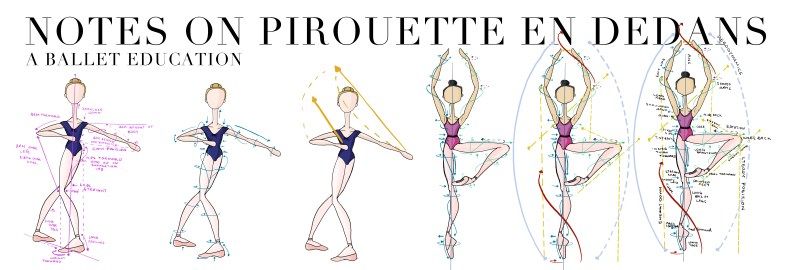
Questions on the topic "Ballet"
Ask a new question
The question will be asked to all schools on the portal after verification. Answers usually come within a day.Ask a question
-
Ballet for adults with individual t...
Balabkina Olga Nikolaevna St. Petersburg
9 months back 716
1
response
Ballet for adults with a personal trainer interested read more
-
Good afternoon! I'm interested in classical.
